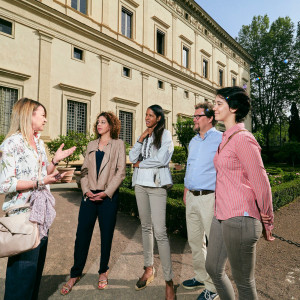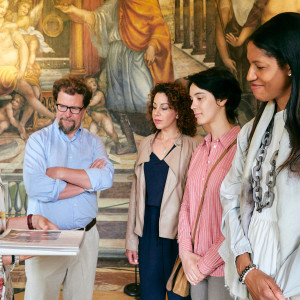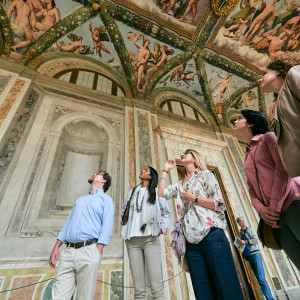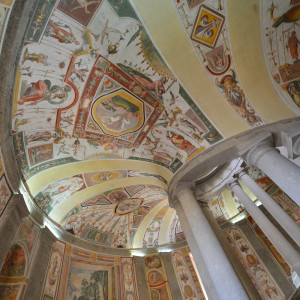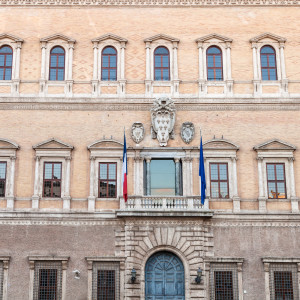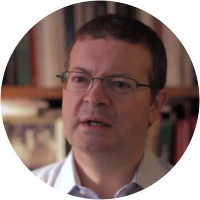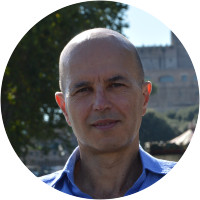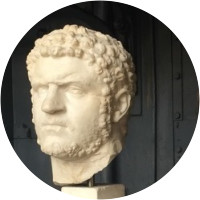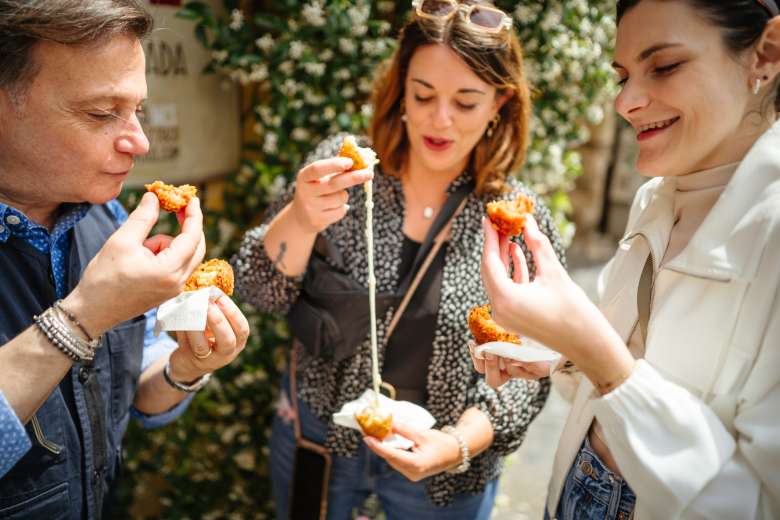Tour Details
Duration
3 hours
Product Type
Tour
Venues
- Villa Farnesina
- Campo de' Fiori
- Palazzo Farnese
- Palazzo della Cancelleria
- Palazzo Spada
Select a date
Tour Description
During the Renaissance, powerful families from all over Europe descended upon Rome in order to be closer to the Vatican and the Catholic Church. They erected magnificent palaces, paved streets, and commissioned such artists as Michelangelo and Raphael to create beautiful testaments to their power and prestige. During the course of this three-hour Rome palazzo tour, we will plunge ourselves into this world, exploring the great palaces of the Renaissance with an art historian while discovering exactly how art and power went hand in hand during 1500s Rome.
Rome During the Renaissance
We'll spend the first part of our time together in an area of central Rome near Campo de' Fiori where several important families from northern Italy built their palaces in the early 1500s. Here, we'll encounter a number of very significant artists and architects, including Bramante, Raphael, and Michelangelo, while our guide helps frame some of the basic concepts that informed the work of these thinkers, including a revived interest in antiquity and developments in mathematics and philosophy. We'll also look at the social and political developments in Rome during this period, as each family vied for the ultimate position of power: the papacy.
The Farnese Family
Our walk will then take us through Piazza Farnese, the site of the imposing Palazzo Farnese. This was the historical home base of the Farnese family, the wealthy clan that counted Pope Paul III among its members. Designed in part by Michelangelo, Palazzo Farnese is a supreme example of a noble Renaissance palace and is recognized as one of the most majestic and graceful structures in the city. It also exemplified the prestige of the Farnese and will lead us to a discussion of how art and power intersected here and elsewhere.
A Walk Through History
Our stroll through the rest of this neighborhood may include any number of other 16th- and 17th-century mansions, including the Palazzo Cancelleria, a milestone of Renaissance architecture. Along the way, we'll discuss the lifestyle of the aristocracy, including the lavish balls and parties that were thrown here and that figured critically into the larger political landscape of the city. We will pass through many significant streets of the city, too, most of which date to the late medieval or early Renaissance period, including the Via Giulia, arguably the most important street in Rome, designed by Bramante.
A Closer Look
The second half of our tour will focus on one of the best-preserved Renaissance homes of the period, the Villa Farnesina. Built by Agostino Chigi, a wealthy Sienese banker who underwrote much of Pope Julius' enterprises (including the Sistine Chapel), the villa today boasts an array of important artworks. Among these are two major pieces by Raphael: “The Triumph of Galatea" and the amazing "Cupid and Psyche" ceiling fresco cycle. Quiet and rarely visited, Villa Farnesina will also afford us the opportunity to get close to the art that drove the Renaissance. Wrapping up, we will explore how the Villa Farnesina exemplifies the themes we will have explored on this tour: an interest in antiquity, the intersection of power and art, and the presence of the church in everyday life.
Looking for more Renaissance art? See our Vatican Tour.
FAQ
Do we go inside the venues? We go inside Villa Farnesina. Palazzo Farnese is seen from the exterior. Please note: interior visits to the Palazzo Farnese can only be booked directly through the venue itself. They do not allow for any outside tour groups.
Do you reserve headsets for this tour?
Do you reserve headsets for this tour?
Depending on your group size, we may be required by Villa Farnesina to order headsets, in which case you’ll see a “Headset Fee” added to your order. If you would like to guarantee headsets for your tour regardless of your group size, please email us, and we’ll be happy to get them reserved for you.
Experts
Where You'll Start
–
136 Reviews
Reviews can only be left by Context customers after they have completed a tour. For more information about our reviews, please see our FAQ.
Lauren was so interesting. My husband and I were the only two so we had many opportunities to ask very specific questions. She knew the answers. For instance, the villa we visited was her passion and had published on it. It was so special to talk about early villas used as future prototypes for more modern estates. We went into very quiet residential areas and learned about Rome and its population today. It was something that I had not really seen before. Rome is busy and crowded. It was fairly amazing to see Rome from such a different and informed perspective!
Gibson
Reviewed on:
May 25, 2013
The only (slight) criticism I would have is that Lauren may have let one of the guests run on a little bit, causing her to perhaps slightly mistime the tour and arguably leave not as much time as she might have left for the highlight of the tour, the Villa Farnesina.
Zygmunt
Reviewed on:
May 7, 2013
Lauren was wonderful. What we recalled from our last tour with your group (a long time ago!) was that you gave us a deep slice of a small piece of Rome. That is what we were looking for, and that is what Lauren gave us. But she also put the time of our particular interest (Renaissance) into the context of Rome's development both before and after. She made us see how architecture and infrastructure and art were all connected and why that mattered. And we are quite fascinated with her theories about Chigi and his mistress in connection with the paintings in his home. Indeed, we will be watching for her book. She was very good at drawing in our shy daughter as well, and encouraged questions, which we appreciated. I'd take one of her tours again in a heartbeat, and will strongly recommend your tours to anyone looking for real substance. Thanks so much for enriching our knowledge, and making Renaissance Rome come alive for us!
Julie
Reviewed on:
Apr 3, 2013
